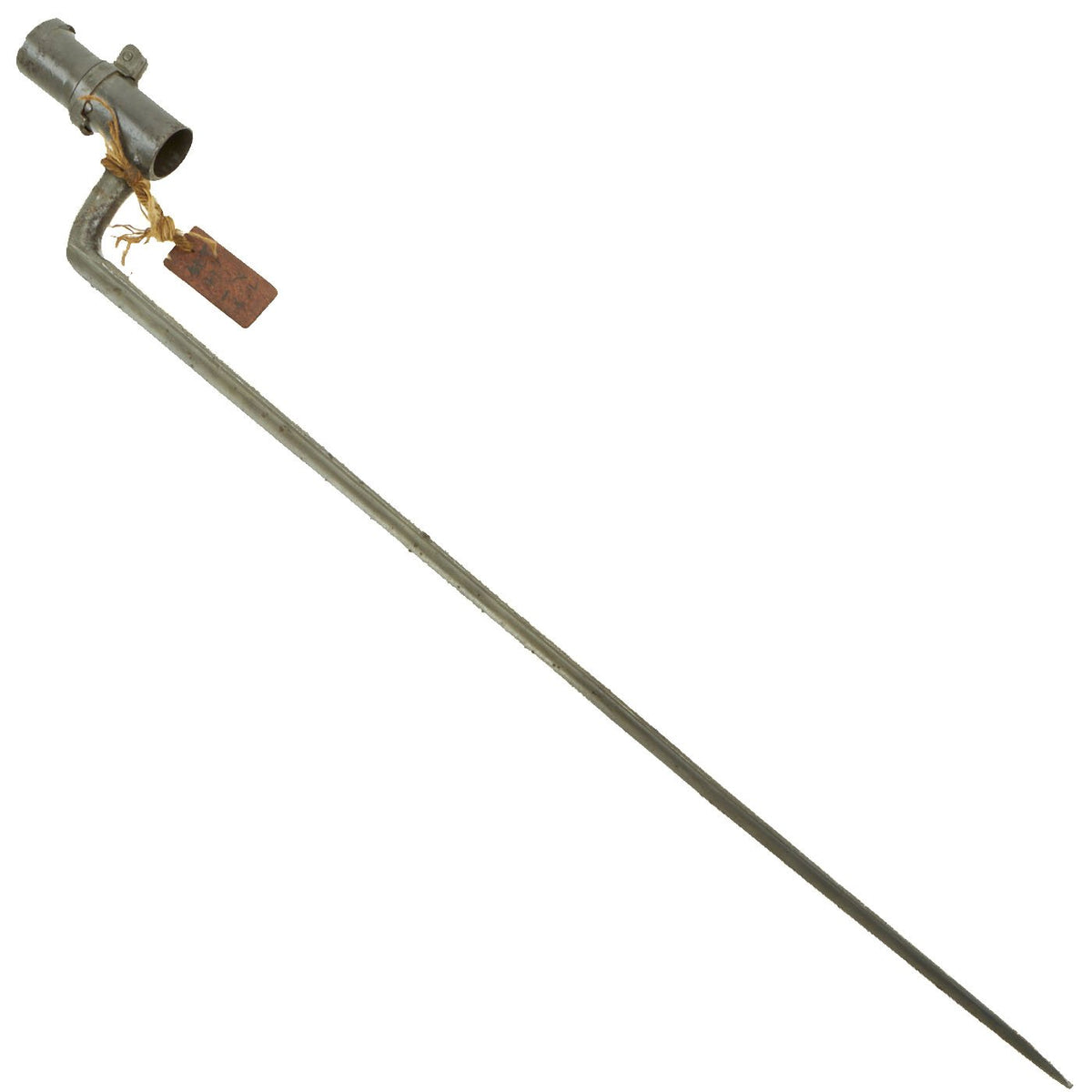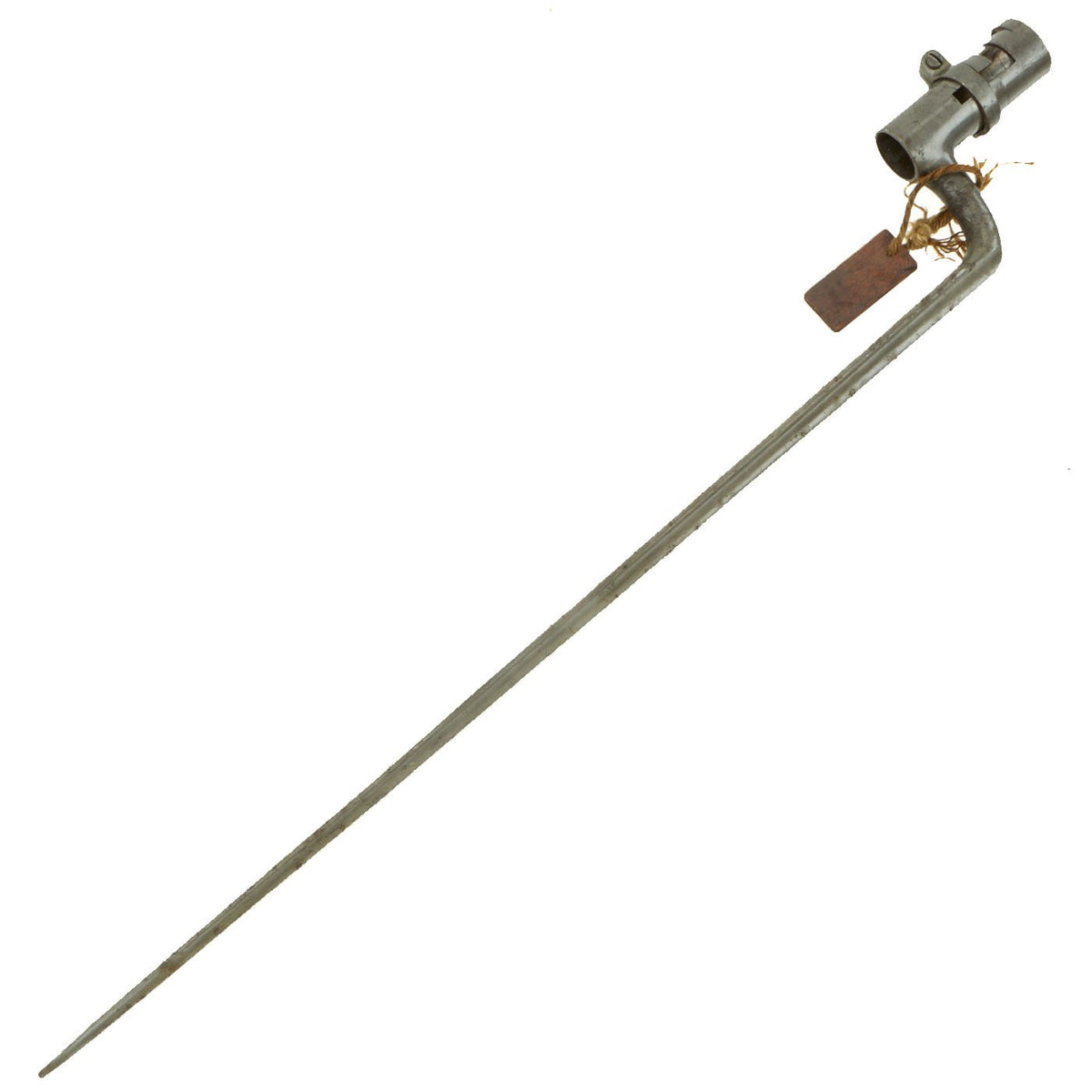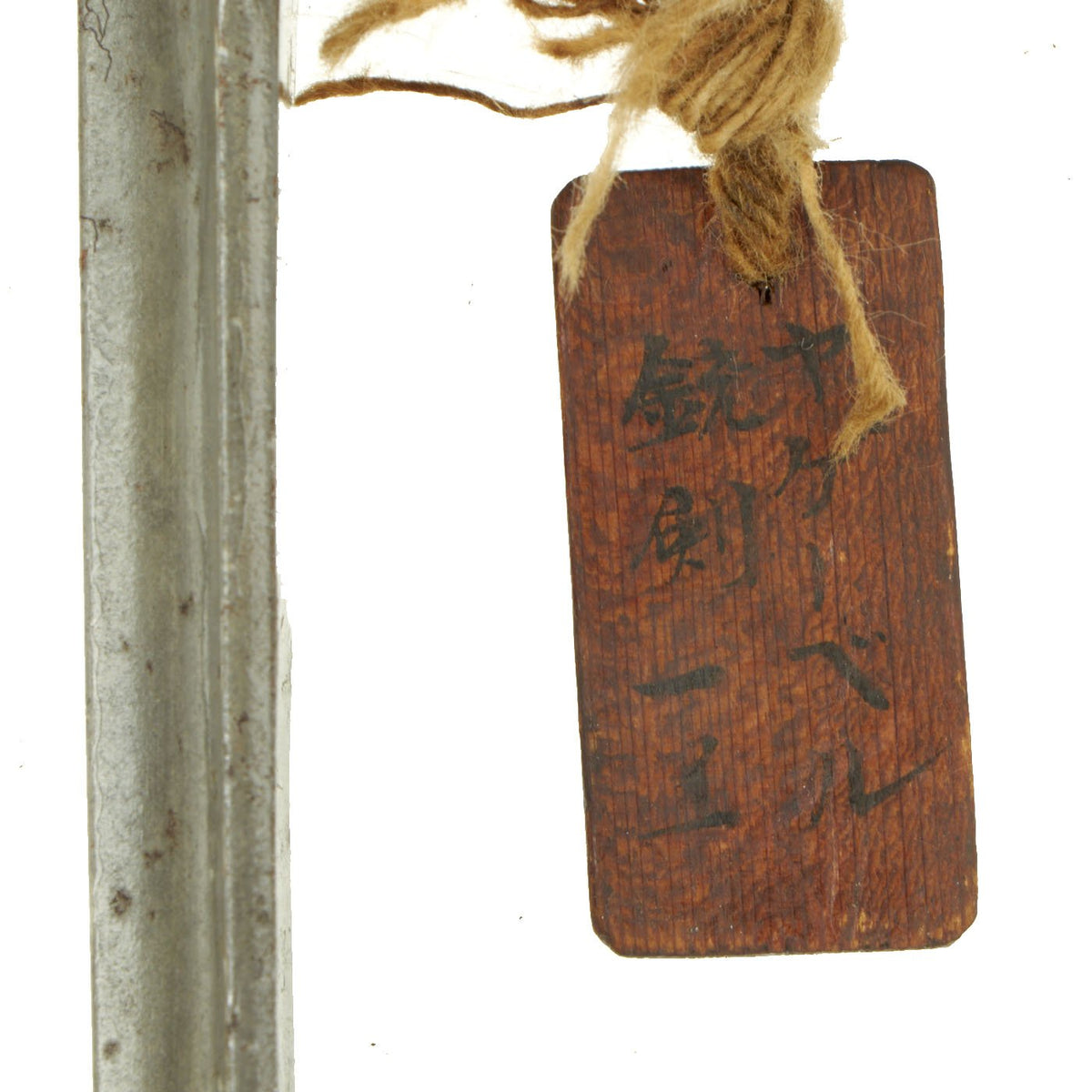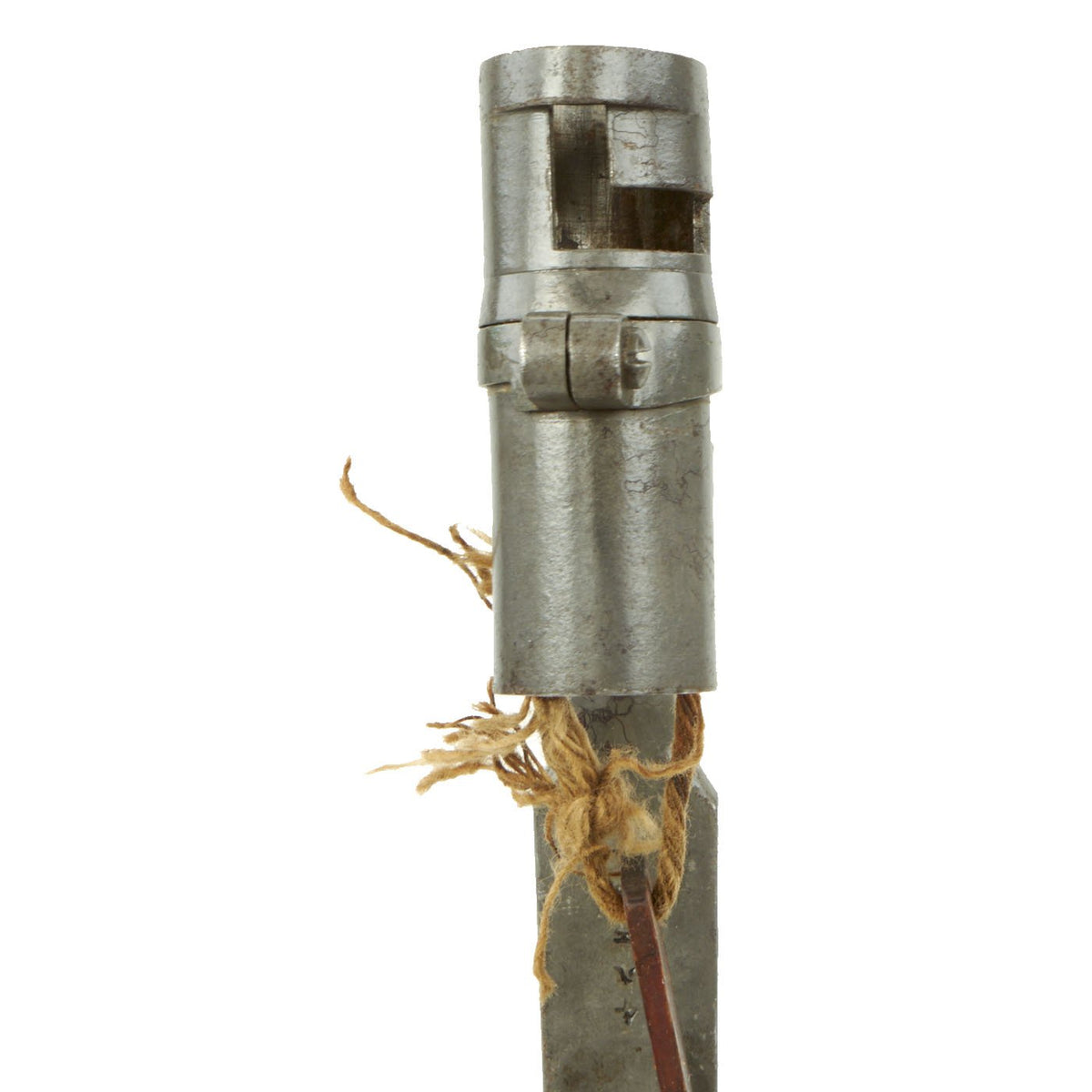Original 19th Century Japanese Boshin War Era .69 Caliber Musket Triangular Socket Bayonet Original Items
$ 395,00 $ 118,50
Original Item: Only One Available. Items from the Japanese Boshin War of 1868-1869 are incredibly hard to come by. A wide variety of arms from all over the western hemisphere were used during the conflict, particularly European and American Arms.
What we have here is a .69 Caliber Bayonet Socket Bayonet which very well may be of American Manufacture, as it closely resembles a U.S. Model 1842 Bayonet. However, this could also be of European manufacture as there are no markings aside from Japanese characters (numbers) stamped on the blade. The numbers stamped on the blade most likely originally corresponded to a musket to which this bayonet was fitted. Tied to the bayonet is a wooden tag which has written more numbers and a name.
Overall length is approximately 21”, blade measurement is 18”, with the socket measuring 2 ¾”. The bayonet is in very good condition for its age, showing some light corrosion here and there, and has been painted with a Japanese lacquer. This is a very scarce piece, which is seldom found today on the market, and a must have for the collector of Japanese blades!
Specifications:
Blade Length: 18″
Blade Style: Triangular Socket
Overall length: 20 3/4“
Socket: 2 3/4″
The Boshin War, sometimes known as the Japanese Revolution, was a civil war in Japan, fought from 1868 to 1869 between forces of the ruling Tokugawa shogunate and those seeking to return political power to the Imperial Court.
The war was founded in dissatisfaction among many nobles and young samurai with the shogunate’s handling of foreigners following the opening of Japan during the prior decade. Increasing Western influence in the economy led to a decline similar to that of other Asian countries at the time. An alliance of western samurai, particularly the domains of Chōshū, Satsuma and Tosa, and court officials secured control of the Imperial Court and influenced the young Emperor Meiji. Tokugawa Yoshinobu, the sitting shōgun, realizing the futility of his situation, abdicated political power to the emperor. Yoshinobu had hoped that by doing this, the House of Tokugawa could be preserved and participate in the future government.
However, military movements by imperial forces, partisan violence in Edo, and an imperial decree promoted by Satsuma and Chōshū abolishing the House of Tokugawa led Yoshinobu to launch a military campaign to seize the emperor’s court in Kyoto. The military tide rapidly turned in favor of the smaller but relatively modernized imperial faction, and, after a series of battles culminating in the surrender of Edo, Yoshinobu personally surrendered. Those loyal to the Tokugawa retreated to northern Honshū and later to Hokkaidō, where they founded the Republic of Ezo. Defeat at the Battle of Hakodate broke this last holdout and left imperial rule supreme throughout the whole of Japan, completing the military phase of the Meiji Restoration.
Around 69,000 men were mobilized during the conflict, and of these about 8,200 were killed. In the end, the victorious imperial faction abandoned its objective of expelling foreigners from Japan and instead adopted a policy of continued modernization with an eye to eventual renegotiation of the unequal treaties with the Western powers. Due to the persistence of Saigō Takamori, a prominent leader of the imperial faction, the Tokugawa loyalists were shown clemency, and many former shogunate leaders and samurai were later given positions of responsibility under the new government.
When the Boshin War began, Japan was already modernizing, following the same course of advancement as that of the industrialized Western nations. Since Western nations, especially the United Kingdom and France, were deeply involved in the country’s politics, the installation of Imperial power added more turbulence to the conflict. Over time, the war has been romanticized as a “bloodless revolution”, as the number of casualties was small relative to the size of Japan’s population. However, conflicts soon emerged between the western samurai and the modernists in the imperial faction, which led to the bloodier Satsuma Rebellion.
Fast Shipping with Professional Packaging
Thanks to our longstanding association with UPS FedEx DHL, and other major international carriers, we are able to provide a range of shipping options. Our warehouse staff is expertly trained and will wrap your products according to our exact and precise specifications. Prior to shipping, your goods will be thoroughly examined and securely secured. We ship to thousands clients each day across multiple countries. This shows how we're dedicated to be the largest retailer on the internet. Warehouses and distribution centres can be located throughout Europe as well as the USA.
Note: Orders with more than one item will be assigned a processing date depending on the item.
Before shipping before shipping, we'll conduct a thorough inspection of the items you have ordered. Today, the majority of orders will be delivered within 48 hours. The delivery time will be between 3-7 days.
Returns
The stock is dynamic and we cannot completely manage it because multiple stakeholders are involved, including our factory and warehouse. So the actual stock may alter at any time. It's possible that you may not receive your order once the order has been made.
Our policy is valid for a period of 30 days. If you don't receive the product within 30 days, we are not able to issue a refund or an exchange.
You can only return an item if it is unused and in the same state as the day you received it. You must have the item in its original packaging.
Related products
Uncategorized
Uncategorized
Uncategorized
Uncategorized
Uncategorized
Uncategorized
Uncategorized
Uncategorized
Australian WWII Owen MK1 Machine Carbine SMG Custom Fabricated Replica with Sling Original Items
Uncategorized
Uncategorized
Uncategorized
Uncategorized
Uncategorized
Uncategorized
Uncategorized
Uncategorized
Uncategorized
Uncategorized













































































